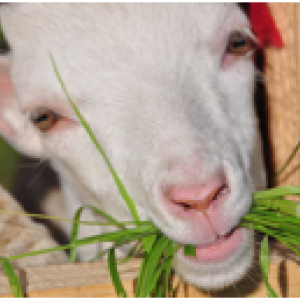
This comparative five year study on grasslands suggests that allowing grazing animals to crop the excess growth of of grasses that, due to fertization, grow too vigorously, can counteract the threats these grasses present to the other plants that contribute to the biodiversity of native prairies.
The study argues that grazing allows more sun to reach the ground and the other plants hidden below the fast growing grasses, thereby reducing biodiversity loss. A group of scientists analysed the results from the same type of experiment on 40 different grassland sites globally in order to determine what measures could help preserve the biodiversity of native prairies. The experiments they ran therefore tested four different scenarios. In the first, the plot of grassland was fenced to keep grazing animals out. A second was treated with a set dose of fertilizers, to mimic the effect of excess nutrients from human activities, but was not fenced so the animals could graze. Another plot was both fenced and fertilized. And a last one was left alone. All four scenarios tried to keep the same type of grazing that had been in place before the experiment. The variety of plants decreased in the grasslands where animals had been kept out and the reverse happened where animals grazed, by allowing more light to reach the plants at a lower level. Larger animals made the effect even greater.
Abstract
Human alterations to nutrient cycles1, 2 and herbivore communities3, 4, 5, 6, 7 are affecting global biodiversity dramatically2. Ecological theory predicts these changes should be strongly counteractive: nutrient addition drives plant species loss through intensified competition for light, whereas herbivores prevent competitive exclusion by increasing ground-level light, particularly in productive systems8, 9. Here we use experimental data spanning a globally relevant range of conditions to test the hypothesis that herbaceous plant species losses caused by eutrophication may be offset by increased light availability due to herbivory. This experiment, replicated in 40 grasslands on 6 continents, demonstrates that nutrients and herbivores can serve as counteracting forces to control local plant diversity through light limitation, independent of site productivity, soil nitrogen, herbivore type and climate. Nutrient addition consistently reduced local diversity through light limitation, and herbivory rescued diversity at sites where it alleviated light limitation. Thus, species loss from anthropogenic eutrophication can be ameliorated in grasslands where herbivory increases ground-level light.
Citation
Borer E. T., Seabloom E. W., Gruner D. S., Harpole W. S., Hillebrand H., Lind E. M., Adler P. B., Alberti J., Anderson T. M., Bakker J. D., Biederman L., Blumenthal D., Brown C. S., Brudvig L. A., Buckley Y. M., Cadotte M., Chu C., ClelandE. E., Crawley M. J., Daleo P., Damschen E. I., Davies K. F., DeCrappeo N. M., Du G., Firn J., Hautier Y., Heckman R. W., Hector A., HilleRisLambers J., Iribarne O., Klein J. A., Knops J. M. H., La Pierre K. J., Leakey A. D. B., Li W., MacDougall A. S., McCulley R. L., Melbourne B. A., Mitchell C. E., Moore J. L., Mortensen B., O'Halloran L. R., Orrock J. L., Pascual J., Prober S. M.,. Pyke D. A, Risch A. C., Schuetz M., Smith M. D., Stevens C. J., Sullivan L. L., Williams R. J., Wragg P. D., Wright J. P., Yang L. H., 2014, Herbivores and nutrients control grassland plant diversity via light limitation. Nature, DOI: 10.1038/nature13144
Read the full article in Nature here and a summary of the research in Science daily here.
You can find more resources on land-use and ecosystems here, and biodiversity conservation here.







Post a new comment »